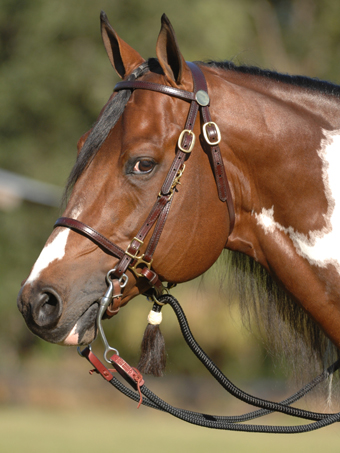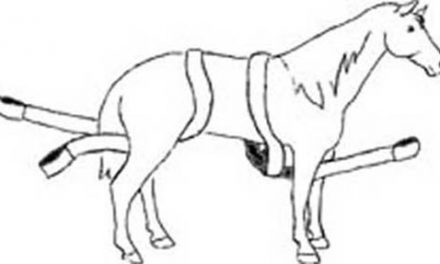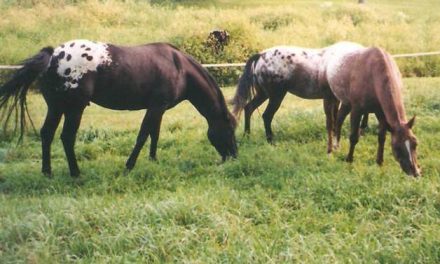 Through the lips, over the gums…look out stomach! Here it comes!
Through the lips, over the gums…look out stomach! Here it comes!
Once the horse has sorted, chewed and softened feed with salvia he swallows. The slurry travels down the esophagus and into the stomach.
The esophagus, a muscular tube about fifty inches in the average horse, leads to the stomach.
A horse chokes if a foreign object blocks the esophagus. This object may be an apple, corn cob, hay cube, a wad of improperly chewed feed or baler twine. Horses can choke on most anything…
The equine esophagus could also be blocked by a growth (tumor) or scar tissue from trauma (a previous choke episode or damage to the sensitive tissue because of a medical procedure).
Symptoms of choke in horses:
• Heavy nasal discharge that contains bits of feed and white foamy saliva
• Excessive salivation
• Stretching and extending the neck
• Attempts to retch
• Inability to swallow
• Coughing and blowing out feed through the mouth and nose
Call your veterinarian and remove all feed as soon as you see any of these symptoms. Even though the horse can still breathe this is a medical emergency. Prolonged obstruction can cause scar tissue. Aspiration of fluid in to the lungs can cause pneumonia.
To prevent choke do the following:
• Avoid large chunks of food – treats, apples, carrots
• Avoid grass clippings
• Avoid poor quality forage or hay (overly mature and stemmy)
• Avoid feeding after sedation
• Avoid leaving foreign objects within reach (remove the baler twine!)
• Place several large rocks in the feeder if the horse bolts his feed
• Soak the feed for senior horses, horses with poor teeth or a previous history of choke
• Chose a feed designed to meet the nutritional needs of the horse and can be offered as gruel – if needed.
• Make sure the horse is receiving proper and regular dental care.
After passing through the esophagus the feed now enters the stomach through a one-way entry.
At the point where the esophagus and stomach join there is a very strong cardiac sphincter valve. This valve prevents food from being regurgitated and does not allow the horse to burp. The horse’s stomach will usually rupture before this valve allows the material to be regurgitated. A ruptured stomach will result in death. Feed must be of the quality and quantity the horse can handle to avoid stomach distress.
Once through the cardiac sphincter valve the feed arrives in the stomach.
The stomach of the horse is very small in relationship to the size of the horse. The average horse’s stomach only holds about 4 ½ gallons. It fills fast and empties fast. The stomach breaks feed down mechanically and chemically.
There are four sections to the equine stomach:
1. Esophageal section – basically a storage area.
2. Cardiac section – produces mucous used to coat the stomach and protect it from acidic secretions.
3. Fundic section – produces enzymes and hydrochloric acid which break down the feed.
4. Pyloric section – produces a small amount of enzymes and mucus. The pyloric section is highly acidic (low pH level).
Most of the digestion of feed takes place in the fundic section. The enzyme, pepsin, breaks down protein into amino acids, which can then be utilized by the horse.
The muscles in the stomach uses rhythmic contractions called peristalsis. This mechanical action helps break down feed into smaller particles.
The design of the equine stomach is such that a horse needs small frequent meals. It fills quickly and empties quickly. Feed usually only remains in the stomach for about 20 minutes. Ulcers can result if the stomach is allowed to become empty.
Next month we’ll journey into the small intestine.
* Earn a Bachelor of Science Degree in Equine Studies or certification as a Professional Horse Trainer or Riding Instructor. Start your new career as a riding instructor, horse trainer, or stable manager. All courses are online. Visit www.horsecoursesonline.com for information.



